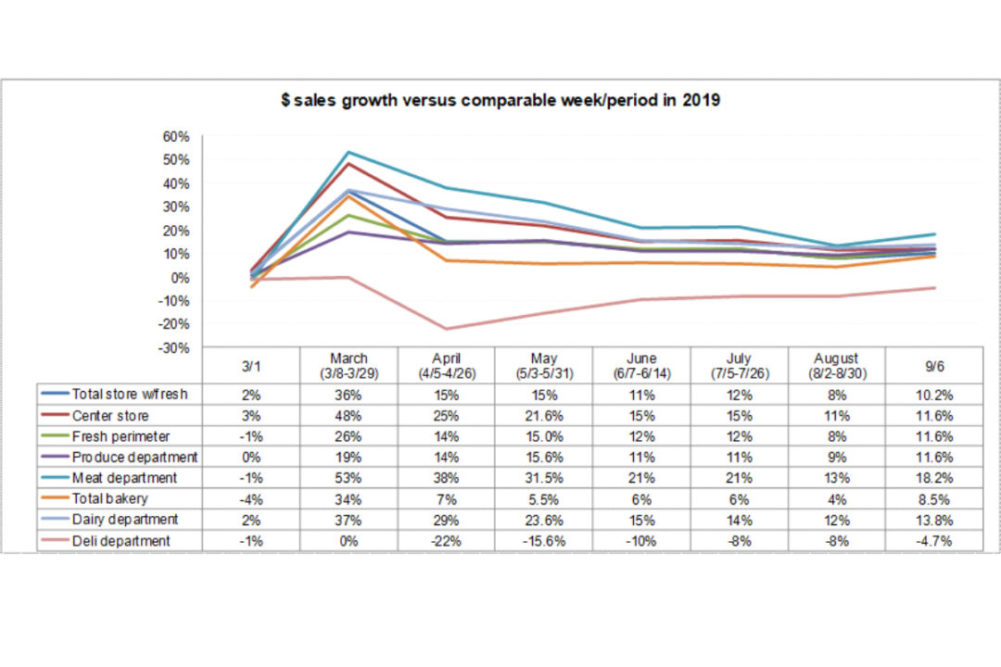SAN ANTONIO – After dropping to a minimal sales gain of 1% last week, Labor Day weekend breathed some new air into the perimeter with sales the week ending on Sept. 6, gaining 11.6% over 2019, according to data collected and analyzed by 210 Analytics and IRI.
“Labor Day is always a big grocery holiday and this year did not disappoint,” said Jeremy Johnson, vice president of education for the International Dairy Deli Bakery Association (IDDBA). “This positive momentum for the grocery industry going into the fall is a fundamentally different picture than what we had been seeing these last few years. Importantly, many departments drove sales gains by engaging more buyers, securing more product trips and increased spending per trip. The big question for the fall and beyond becomes how we can continue to engage at these levels.”
The meat category saw a rise of 18% above 2019 dollar sales and 11% above volume sales. Dollar wise, lamb (up 29.1%) was the top performing meat. Beef was up 25.5%, chicken was up 4.8%, turkey was up 5.3% and pork was down 13.9%.
“Pork prices started to rebound in the week leading up to Labor Day as news of the first German case of African swine fever in a wild boar was confirmed,” said Christine McCracken, executive director for animal protein for Rabobank. “US pork prices moved 4% higher, as leading importers in China, Japan and South Korea quickly moved to block German pork imports as they do not yet recognize World Health Organization regionalization principles. Germany is the world's fifth largest exporter of pork and a leading supplier to China. US pork production averaged 7% above year-ago levels in the weeks before the holiday-shortened week, limiting prices in recent weeks. Labor remains an issue in many plants and may limit harvest levels in coming weeks. Tighter domestic supplies could boost pork prices through year-end.”
The deli department came in 4.7% below 2019 sales numbers, an improvement over previous weeks. Deli prepared came in at 16.1% below 2019 sales with deli meat at 12.2% above and deli cheese at 11.3% above.
“The work from home movement that started the middle of March and persists today, combined with many students partaking in virtual education from home, is dampening ready-to-eat refrigerated lunch solutions,” said Eric Richard, industry relations coordinator with IDDBA. “On the other hand, the idea of combining scratch with convenience-focused items appears to be popular, with refrigerated side dishes up 23.4% over year-ago levels.”



